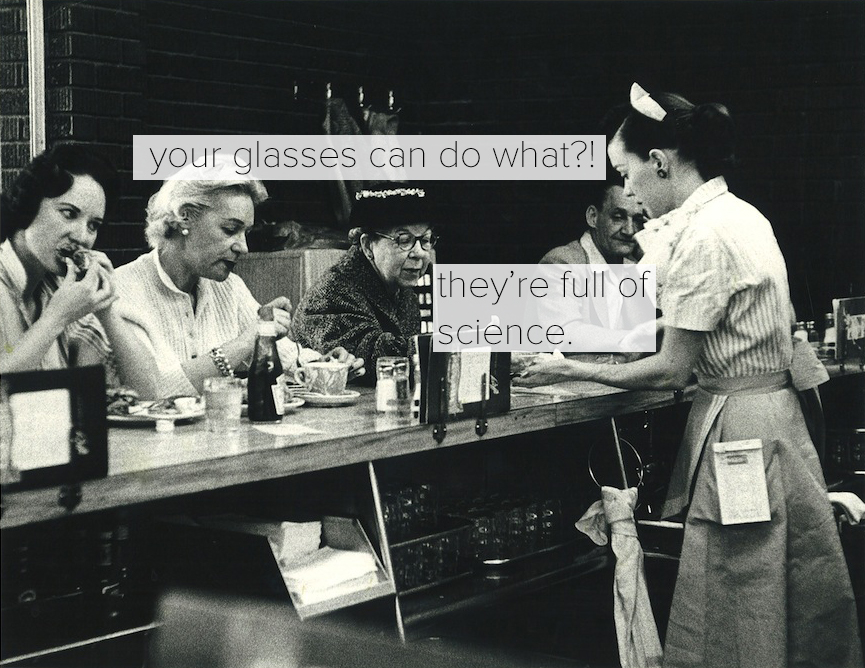These wearable gadgets have been around for a while now, but the hype hasn’t died down. What are they all about?
Google Glass, n;
A wearable computer system that adds a display to your daily vision. With it, you can view the time, date, weather, traffic information, all without using your hands. You can’t buy Glass quite yet — it’s only available for Glass Explorers and chosen developers — but it’s rumored to become available sometime this year.
Basically, it’s like your smartphone (but likely smarter) and it’s on your face. You can take pictures of the sunset to post to Facebook by winking. You can find the road less travelled with a map overlaid on the fork in front of you. It’s mainly controlled by voice and gesture commands, which means eventually, everyone could be talking to their headsets instead of staring down at their phones.
Glass’ basic premise builds on “augmented reality.” It adds a layer of context to the time of day, your location, or the connected gadgets nearby to keep a running feed of what’s important to you in your eyeline (literally). It runs on apps, just like your phones and tablets. Google Now — a cards-centric app that Google uses to remind you of appointments, tell you what’s happening nearby, and when you should leave to make your 2:00 meeting — will be less avoidable when it chirps in your face. Your favorite social networks will likely be available (if they aren’t already) on Glass by the time it’s ready for general purchase. There are also tons of other cool apps being developed specifically for Glass, like this one from a North Carolina firefighter that will help his firefighting colleagues stay safe or OpenGlass, which wants to help the blind and visually impaired.
Who knows how Google Glass will be received once the public gets its’ hands on it, and what other uses will emerge.


